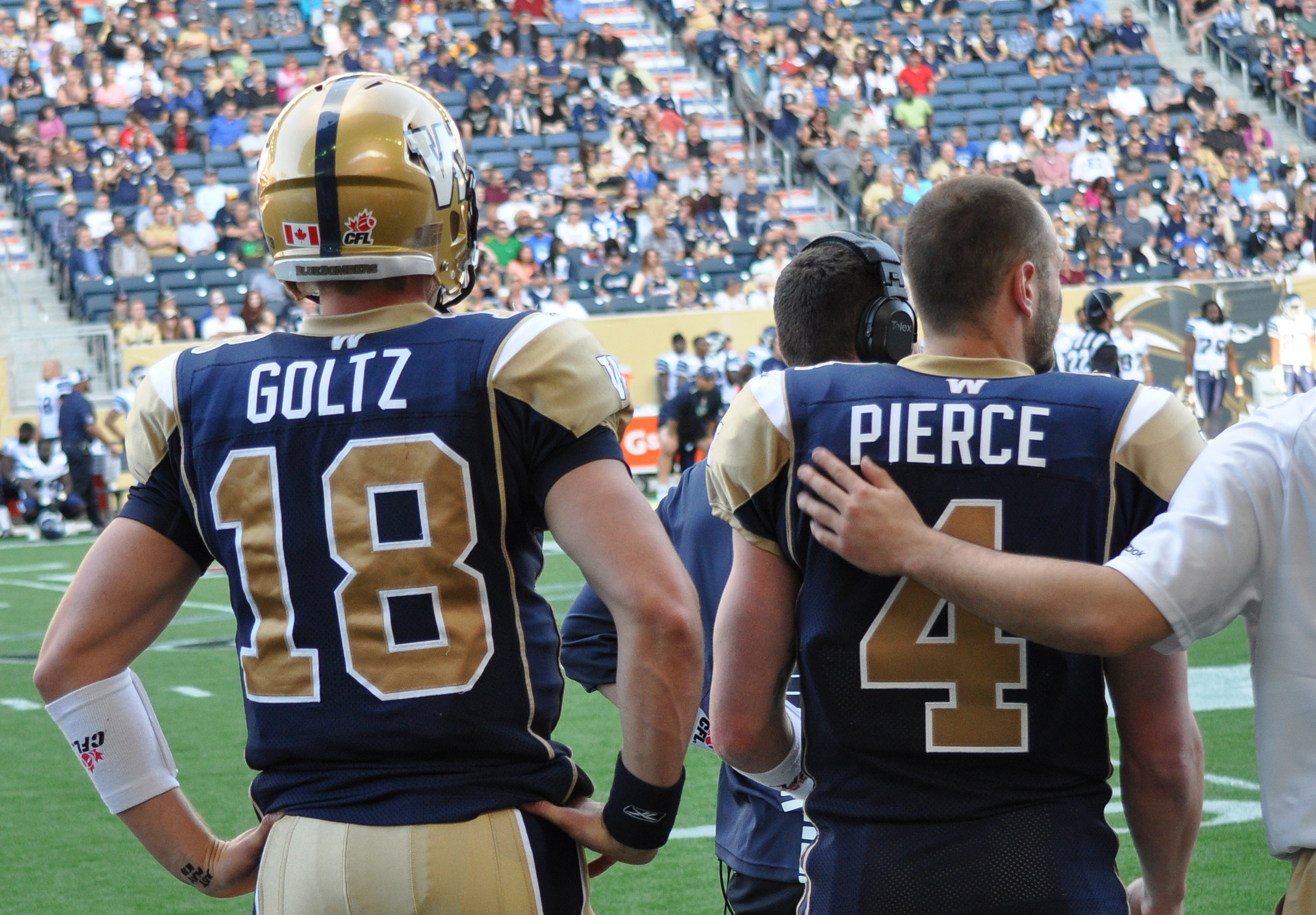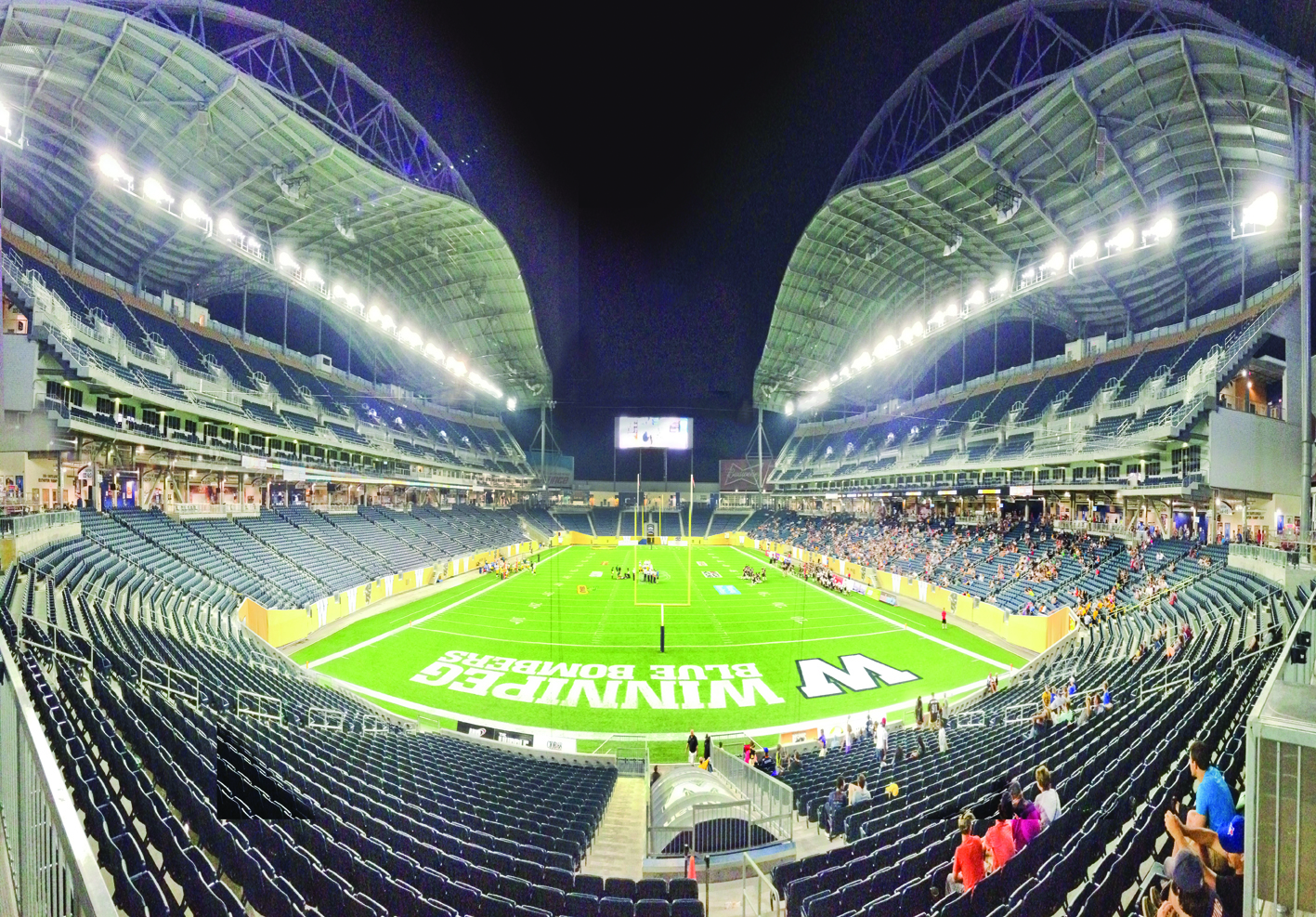From the Vault is both a cheap excuse to highlight interesting stories from the past and a celebration of times gone by. Just as the ghosts of Disney periodically release gems from their diamond-coated crypt, so do we reach back and pull classic moments from history in attempt to sell them as hip and fresh.
After hockey, Canadian football has emerged as one of the great sporting traditions that Canadians celebrate yearly, with a legacy that spans from coast to coast. Its championship trophy, the Grey Cup, has been around since 1909 and is on par with the Stanley Cup as being one of the most impressive looking trophies in professional sports today, with an equally impressive history.
In this first installment of “From the Vault,” I’ll be taking a fond look back at Grey Cup history, uncovering classic moments in Canadian football that you may rarely hear about, and surely won’t see repeated in the modern era of the Canadian Football League.
Nov. 29, 1947
Toronto Argonauts vs. Winnipeg Blue Bombers at Varsity Stadium in Toronto
Meeting in the championship for the third year in a row, the Bombers were considered 5 to 1 long shots to win the game. With 19,000 fans in attendance, Winnipeg shocked the nation by jumping out to a 9-0 lead. The Argos would chip away at the deficit, scoring four rouges before securing a game tying converted touchdown in the third quarter. With the game still tied with only a minute left, the Blue Bombers would ultimately lose the contest due to a costly trick play fumble on a third down gamble.
But it was another trick play, earlier in the third quarter, that would shroud the game in controversy. With the Bombers in kicking range, Bob Sandberg, who had a hand in all aspects of the Bombers offence, caught the Argos by complete surprise; as the team set up for a field goal, Sandberg faked and threw a pass to Johnny Reagan, who ran it in for an easy touchdown.
The play was called back by the referees, who decided that the pass had not crossed the line of scrimmage, which was the rule at the time. The play had been recorded in photographs, so while the result was officially ruled a penalty on field, the media and Bomber fans were anxious to find out whether or not the developed photographs would show proof that the play was legal.
Unfortunately, when the film was developed days later, fans learned the cameramen had also fallen for the well-executed fake, completely missing the actual play. Winnipeg would lose their third straight Grey Cup to Toronto 10-9.
Nov. 26, 1956
Edmonton Eskimos vs. Montreal Alouettes at Varsity Stadium in Toronto
The 44th Grey Cup was only the fourth Canadian football championship game to be broadcasted on Canadian television, and featured one of the most unbelievable finishes in Grey Cup history. The contest featured two teams playing in the GC final for a third straight year, and just like the two times before, the Eskimos reigned supreme.
Led by a nearly unstoppable ground game, the Eskimos ran the ball an incredible 83 times for 456 yards. Both stats are Grey Cup game records that have stood for over fifty years. Two Eskimo players set individual Grey Cup records; Jackie Parker tied the record for most touchdowns in a Grey Cup game with three, while Johnny Bright rushed for an incredible 171 yards. With such remarkable performances, it’s no surprise that the Eskimos blew past the Alouettes in the second half, winning the game 50-27.
In total, eleven touchdowns, seven converts, one field goal and one single were scored by both teams combined, which left fans thrilled for a couple reasons: (a) both the live and television audiences were treated to plenty of exciting scoring plays, and more interestingly, (b) the Canadian Rugby Union (the predecessor to the CFL) had given instruction that “no attempt was to made to retrieve the pigskins from fans.”
Because of this ruling, 18 balls disappeared during the course of the game, with the final ball getting snatched right out of Parker’s hands as the crowd swarmed the field immediately after the Eskimo’s third touchdown. With no more balls remaining, the officials decided to call the game early, declaring Edmonton the winner.
Nov. 30, 1957
Hamilton Tiger-Cats vs. Winnipeg Blue Bombers at Varsity Stadium, Toronto
The 45th Grey Cup was a disappointing final for Winnipeg fans, as the Bombers turned the ball over eight times, getting blown out badly 32-7. But the game will still be remembered for a bizarre moment that happened late in the fourth quarter.
In the game’s final moments, the score already well out of hand, Ti-Cat defender Ray Bawel picked off a Winnipeg pass. It seemed like Bawel would easily run the interception back for a touchdown with no Bomber players able to catch him. As he ran along the Winnipeg sideline, out of nowhere, a polished shoe shot out from among the Bomber squad, tripping Bawel, forcing the Hamilton player to ground the ball. As his Ti-Cat teammates came to congratulate him on his great play, Bawel was incensed as he confronted the Bomber bench, trying to figure out who had tripped him. The officials were forced to penalize the Bomber bench and the Ti-Cats were given half the distance to the goal.
The man responsible for the trip had already managed to escape into the stands, unpunished, and would later be revealed to have been David G. Humphrey, a Toronto lawyer. Humphrey had evidently managed to talk his way past the police security and onto the sidelines and was bitter about losing a case in which his client had been sentenced to hang. Amongst the crowd, Humphrey spotted the jury foreman who had allegedly arranged the guilty verdict. With a flask full of whiskey already in him, Humphrey got the idea to trip a Hamilton player running down the sideline with the ball.
And so he did. Given the nickname “Tripper” by his legal peers, David G. Humphrey passed away May 17, 2009, but will always be remembered for his irrational contribution to the 45th Grey Cup game in Toronto.



